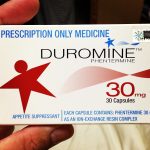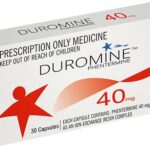Does Duromine Stop Working?

Duromine is a brand of phentermine popular in Australia, South Africa, Malaysia, and New Zealand. Phentermine is a stimulant and is available if you have a prescription. Because taking Duromine comes with a risk of dependence, it is considered a controlled substance. It’s chemically similar to the stimulant amphetamine, which is also a controlled substance.
A healthcare professional may prescribe Duromine if you have obesity, defined by a body mass index (BMI) of 30 or greater. Healthcare professionals may also prescribe it if you have excess weight with a BMI greater than or equal to 27 and have at least one weight-related condition, such as high blood pressure, high cholesterol, or type 2 diabetes. However, a healthcare professional will likely recommend other weight loss strategies first, such as exercise and a calorie-reduced diet.
In Duromine, Phentermine is combined with a resin that slowly releases the phentermine so that the effect of Duromine lasts all day.
How does Duromine work?
Duromine belongs to a class of drugs called anorectics, also known as appetite suppressants. Taking Duromine helps suppress your appetite, thereby limiting how many calories you eat. Over time, this can lead to weight loss.
While the exact way Duromine reduces appetite remains unclear, the drug is thought to act by increasing neurotransmitter levels in your brain. Neurotransmitters — the chemicals norepinephrine, serotonin, and dopamine are your body’s chemical messengers. When your levels of these three chemicals increase, your feeling of hunger decreases.
However, you may build a tolerance to the appetite-suppressing effects of Duromine within a few weeks. If that happens, speak with the healthcare professional who prescribed it.
How is Duromine taken?
Take Duromine exactly as prescribed by your doctor. Follow all directions on your prescription label and read all medication guides or instruction sheets. Your doctor may occasionally change your dose.
For adults and children above the age of 12, the recommended starting dose of Duromine is 30 mg daily while the recommended continuous or intermittent maintenance dose is between 15-30 mg daily depending on responsiveness.
Doses are normally taken before breakfast, or 1 to 2 hours after breakfast. Follow your doctor’s dosing instructions very carefully.
Never use Duromine in larger amounts, or for longer than prescribed. Taking more of this medication will not make it more effective and can cause serious, life-threatening side effects.
This medicine is for short-term use only. The effects of appetite suppression may wear off after a few weeks.
Duromine may be habit-forming. Misuse can cause addiction, overdose, or death. Selling or giving away this medicine is against the law.
Does Duromine Stop Working?
Yes, Duromine is formulated for short-term use in people who are overweight or obese and are actively trying to lose weight through diet and exercise. Its effects are temporary because its effectiveness decreases after three to six weeks. Most doctors advise against using Duromine for longer than 30 days in a row. That’s why you should consider a helpful tool to get you on the weight loss track, but also be aware that once you get that initial boost, it’s up to you to remain loyal to a long-term healthy lifestyle. Besides following a nutritionally balanced diet and exercising regularly, you also need to take enough time to rest and improve your sleep quality. By doing so, you’ll prevent those excess pounds from coming back to you and ensure overall well-being for yourself.
What happens when Duromine stops working?
When Duromine doesn’t work, stops working, or has an intolerable side-effect, you should ask your physician to switch to a different weight-loss medicine. There are lots of options. Some people have to take other medications which cause weight gain; other patients have genetic obesity.





